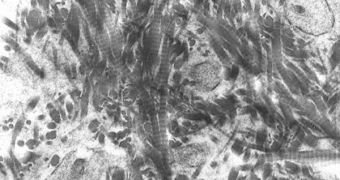According to a new study published in the July 26th issue of the journal Nature Materials, researchers from the Imperial College London (ICL) are one step closer to creating artificial replacement bones from stem cells, AlphaGalileo informs. Fractures or other types of bone damage could thus be repaired without any complications, using tissue created in the lab from the patient's own cells. Therefore, no risk of rejection or adversities exists. However, despite researchers' best efforts, this medical technology is still a few years away.
In people whose bones are severely damaged, and parts of them need to be removed, experts hope to use stem cells to create “fillings,” as in pieces of tissue to be inserted in the created holes. The natural bone tissue would then mold on the artificial structure, and grow faster. It would also grow straight, which sometimes doesn't happen if the bone heals without aid. There are many people whose bones got stuck together at twisted angles following fractures, due to a wide array of factors. An aid made from stem cells would essentially orient bone growth in the needed direction.
“Many patients who have had bone removed because of tumors or accidents live in real pain. By repairing bone defect sites in the body with bone-like material that best mimics the properties of their real bone we could improve their lives immeasurably. Our study provides an important insight into how different cell sources can really influence the quality of bone that we can produce. It brings us one step closer to developing materials that will have the highest chance of success when implanted into patients,” ICL Department of Materials and the Institute of Biomedical Engineering expert, Professor Molly Stevens, explains.
In their experiments on mice, the scientists determined that artificial, bone-like materials made up of skull cells and bone marrow stem cells closely mimicked the properties of actual bones, including stiffness, which is essential. However, when the tissue was created from embryonic stem cells, they were much less stiff. This proves that there are differences between the two types of stem cells, and that only one of them is fit for the job.

 14 DAY TRIAL //
14 DAY TRIAL //